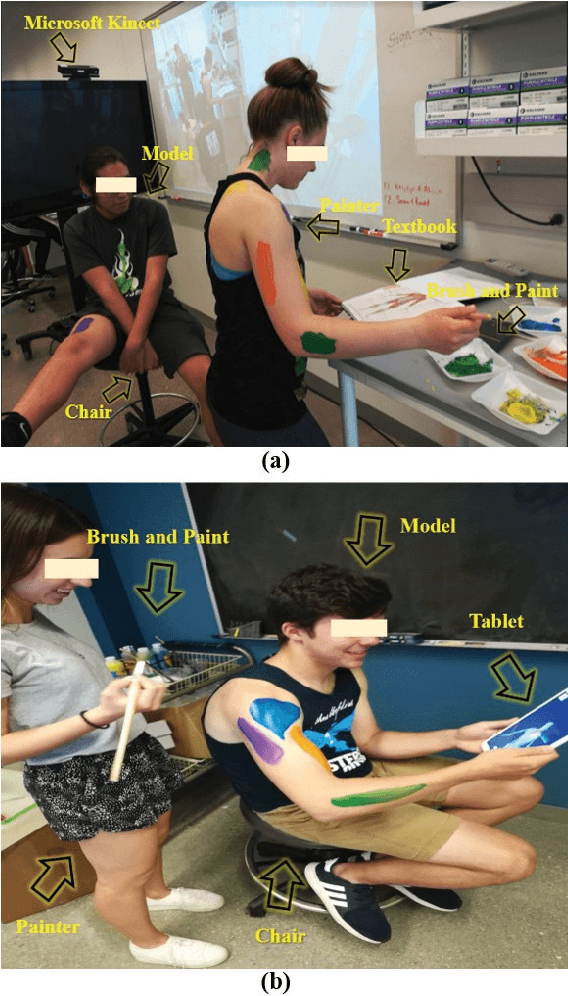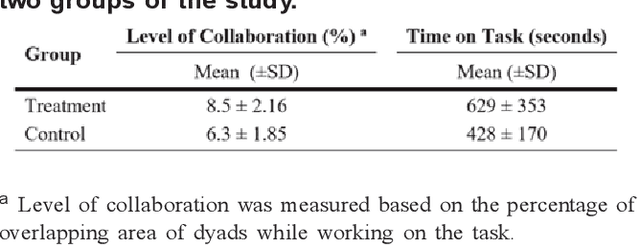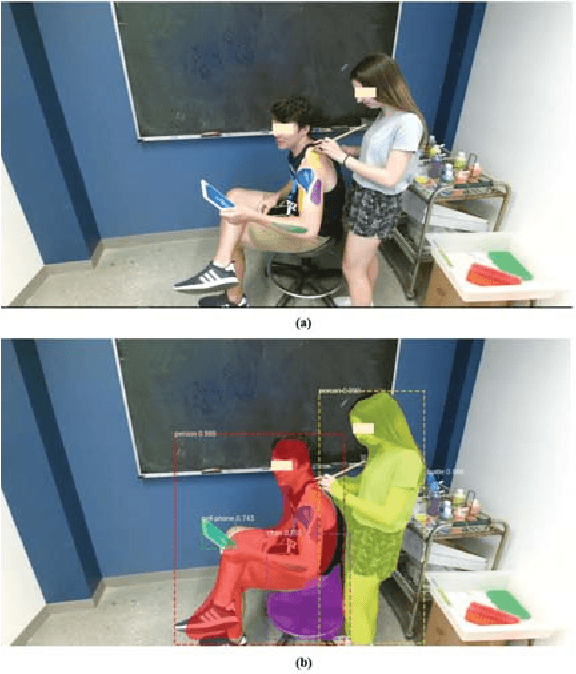Zhang Guo
MMASD: A Multimodal Dataset for Autism Intervention Analysis
Jun 16, 2023



Abstract:Autism spectrum disorder (ASD) is a developmental disorder characterized by significant social communication impairments and difficulties perceiving and presenting communication cues. Machine learning techniques have been broadly adopted to facilitate autism studies and assessments. However, computational models are primarily concentrated on specific analysis and validated on private datasets in the autism community, which limits comparisons across models due to privacy-preserving data sharing complications. This work presents a novel privacy-preserving open-source dataset, MMASD as a MultiModal ASD benchmark dataset, collected from play therapy interventions of children with Autism. MMASD includes data from 32 children with ASD, and 1,315 data samples segmented from over 100 hours of intervention recordings. To promote public access, each data sample consists of four privacy-preserving modalities of data: (1) optical flow, (2) 2D skeleton, (3) 3D skeleton, and (4) clinician ASD evaluation scores of children, e.g., ADOS scores. MMASD aims to assist researchers and therapists in understanding children's cognitive status, monitoring their progress during therapy, and customizing the treatment plan accordingly. It also has inspiration for downstream tasks such as action quality assessment and interpersonal synchrony estimation. MMASD dataset can be easily accessed at https://github.com/Li-Jicheng/MMASD-A-Multimodal-Dataset-for-Autism-Intervention-Analysis.
Collaboration Analysis Using Deep Learning
Apr 17, 2019



Abstract:The analysis of the collaborative learning process is one of the growing fields of education research, which has many different analytic solutions. In this paper, we provided a new solution to improve automated collaborative learning analyses using deep neural networks. Instead of using self-reported questionnaires, which are subject to bias and noise, we automatically extract group-working information by object recognition results using Mask R-CNN method. This process is based on detecting the people and other objects from pictures and video clips of the collaborative learning process, then evaluate the mobile learning performance using the collaborative indicators. We tested our approach to automatically evaluate the group-work collaboration in a controlled study of thirty-three dyads while performing an anatomy body painting intervention. The results indicate that our approach recognizes the differences of collaborations among teams of treatment and control groups in the case study. This work introduces new methods for automated quality prediction of collaborations among human-human interactions using computer vision techniques.
 Add to Chrome
Add to Chrome Add to Firefox
Add to Firefox Add to Edge
Add to Edge